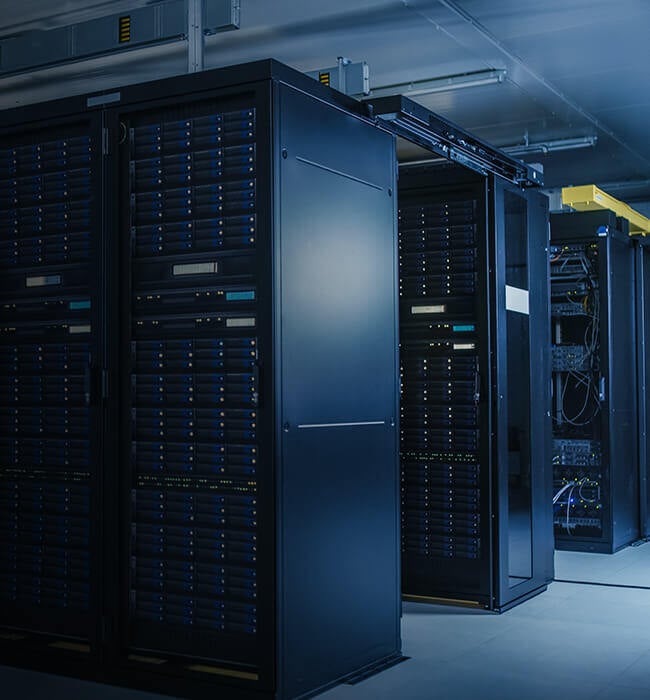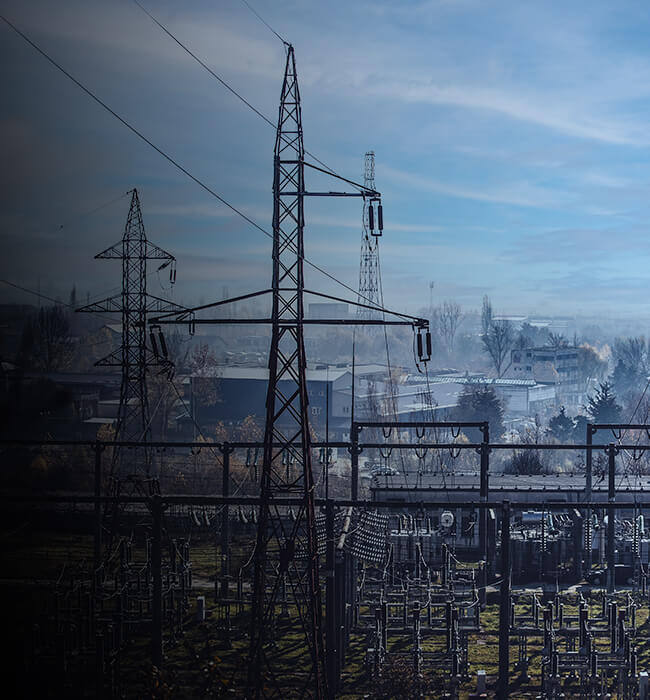Mission-Critical
Power for AI & Grid Stability

World's Highest Power, Lowest ESR, & Fastest-Charging Energy Storage
10 µs Dynamic Response Time
Achieved only by Skeleton, Bypassing the 20µs speed required for GPUs peak shaving.
45% More Energy Efficiency
By eliminating the need for artificial compute loads, reducing heat and increasing efficiency.
Rapid Engineering Capabilities
AI data centers dedicated teams with integrated hardware & software capabilities.
High Performance Energy Storage
From cells, to modules and systems. Skeleton is committed to providing customer-centric solutions for your applications.
AI Peak Load Shaving with GrapheneGPU
GrapheneGPU delivers power when GPUs compute, and charges when GPUs are idle. Maintaining a smooth power demand from the grid, eliminating the need for artificial (empty) loads, unlocking higher compute capacity.
+ Peak Shaving Capacitor Shelf (PCS)
+ 48-400 VDC interface voltage
+ 60-160 kW peak power
+ ORV3 compatible, 1O-40U high

Dynamic Reaction Speed
10 µs
Voltage
48 - 400 V
Peak Power
400 - 1250 A
Continuous Power
300 - 830 A
Backup Power for Data Centers
Battery Backup Unit (BBU) (modules and racks) for data center backup power, based on Skeleton’s proprietary SuperBattery energy storage technology.
-
Integrated DC/DC converter and battery management system (BMS)
-
400 VDC interface voltage, configurable during installation to +400V or –400V with reverse polarity protection
-
Liquid-cooled
-
Skeleton Technologies’ patented Curved Graphene technology

Backup duration
Up to 90 seconds
Nominal Output Voltage
400V
Peak Power
100 kW
Nominal Power
66 kW
Peak Efficiency
97%
Grid-Scale Systems
High-power, long lifetime grid-scale energy storage systems for E-STATCOM and datacenter applications.
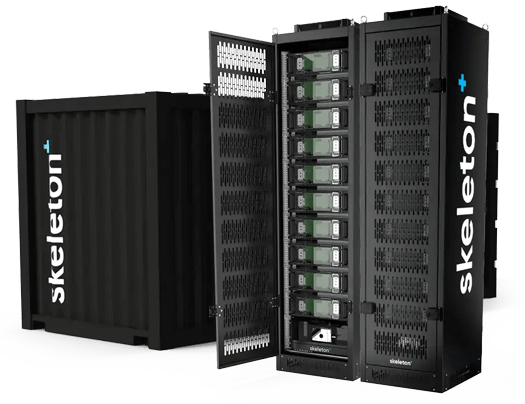
Max power (1s)
1132 kW - 2830 kW
Max current (1s)
1400A - 2500A
Nominal voltage:
648V - 1500V
Supercapacitors & SuperBattery Modules
Designed to fit your unique applications, from grid and data center applications and 19" rack cabinets to engine starting for heavy trucks and mining machinery, to automotive low voltage boardnets.
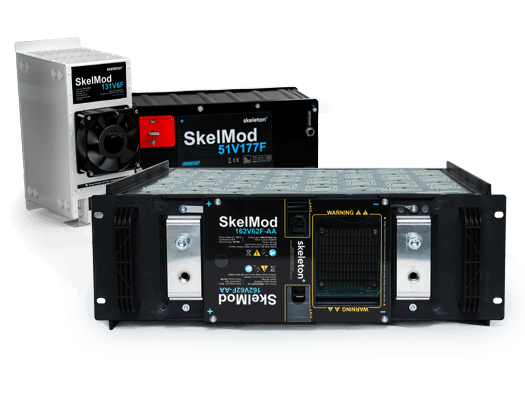
Voltage options
12 - 162V, can be installed in series/parallel
Lifetime
+20 years
High power supercapacitors
Supercapacitors in industry standard D60 and D33 form factors, offering reliable high power, low ESR (1S 0.2-1.6mΩ) with 20+ years of lifetime.
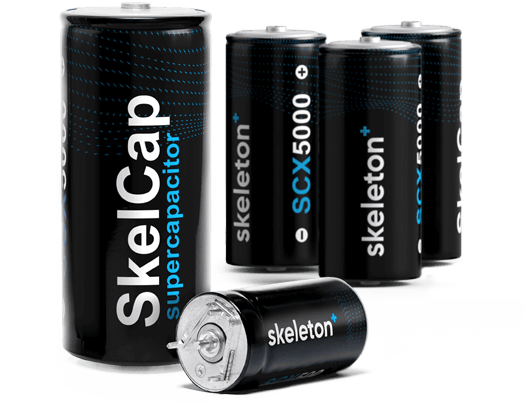
Capacitance
300 - 5000 F
Specific power
20 - 28.4 kW/kg
Voltage
2.85V or 3.0V
ESR (1s)
0.2 - 1.6 mΩ
Temperature tolerance
-40°C to +65°C/149°F
Balanced High Power and energy storage
SuperBatteries fills the gap between supercapacitors and Li-ion batteries, offering the ideal combination of energy, power, and safety.
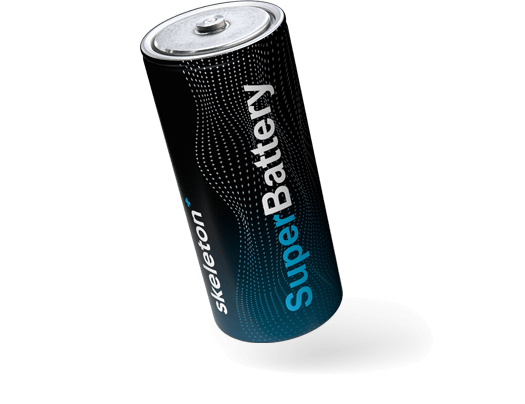
Charge speed
Less than 90 seconds
Discharge cycles
+50,000
Lifetime
Up to 15 years
Operating Temperature
up to +50°C/122°F
What Others
Are Saying About Us








Energy
Storage Solutions
for Your Unique Needs
Modules and systems, designed and certified to fit your unique applications.
Pan-European Company With German Engineering

Headquarters, Module and Systems Development


.jpg?width=424&height=405&name=bitterfeld%20(1).jpg)

Unique Product Roadmap, Supported by the Largest R&D Team in the Industry
Sustainable Raw Materials
Free from cobalt, nickel, and copper
Robust & Safe
Safe even when pierced, crushed, or overheated, due to no lithiated graphite or lithium plating.
Curved Graphene
Skeleton's proprietary material allowing unmatched low internal resistance and high capacitance
Contact Us
Meet your high-power needs with Curved Graphene -based supercapacitor and SuperBattery cells, modules, and systems.

Energy Storage Blog & News
We're committed to making a positive impact on our planet — not just today but every day.


Uninterruptible power supplies (UPS) are a critical part of modern infrastructure, whether you're protecting a hyperscale data center, ensuring critical power delivery in a hospital, or bridging to a...

AI data centers do not draw steady power, but instead, the demand can swing from 20 MW at idle to 180 MW at full burst in a few milliseconds, then crash back down just as fast. Depending on the...

Two of the most common energy storage technologies used for managing peak shaving are supercapacitors and batteries. Both have their advantages, but they serve different purposes when it comes to...
Frequently Asked Questions
A supercapacitor is an energy storage medium, just like a battery. The difference is that a supercapacitor stores energy in an electric field, whereas a battery uses a chemical reaction. Supercapacitors have many advantages over batteries, such as safety, long lifetime, higher power, and temperature tolerance, but their energy density is lower compared to batteries. Learn more.
Skeleton’s SuperBattery technology is a fast-charging, high power battery technology, filling the technology gap between supercapacitors and batteries. SuperBatteries offering the ideal combination of energy, power, and safety for <30-minute applications.
The short answer is that there is no difference in how the words are used today. To learn more about the history of these terms, read our blog post “What’s the Difference between and Ultracapacitor and a Supercapacitor?”.
Supercapacitors and batteries serve different purposes. Supercapacitors excel in short-term applications (typically a few seconds of power) and have a longer lifespan, higher reliability, and efficiency in extreme temperatures. Batteries are more economical for long-term energy needs. See our infographic explaining this the differences and to help you choose the right energy storage technology.
ESR (Equivalent Series Resistance) measures the internal resistance of a supercapacitor, and it's crucial as it affects efficiency, heat generation, and voltage drop. Lower ESR means higher efficiency, less heat, and better performance, especially in high-frequency applications. The lower the ESR of a supercapacitor, the better the performance.
Supercapacitors are capable of operating normally and maintaining efficiency within a temperature range of -40°C/F to +65°C or 149°F, with minimal to no effect on performance. However, high temperature does impact the lifetime of a supercapacitor cell, module, or system.


